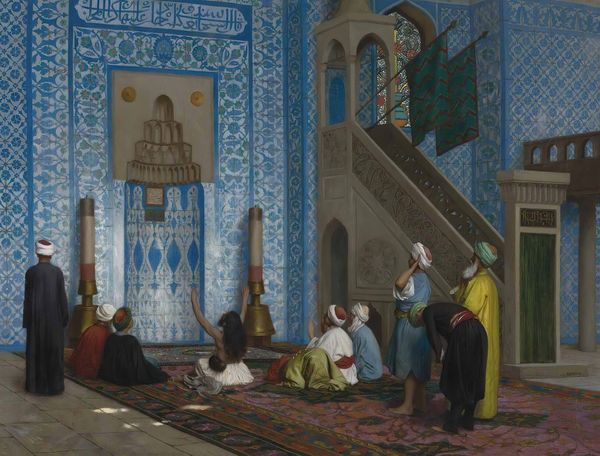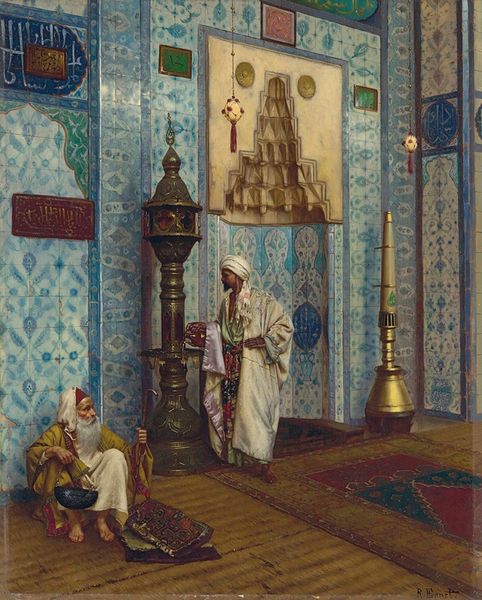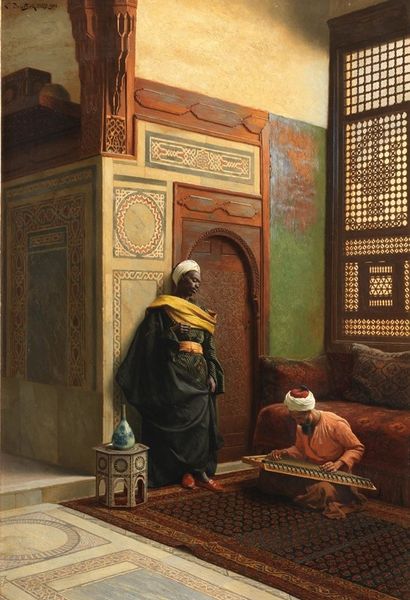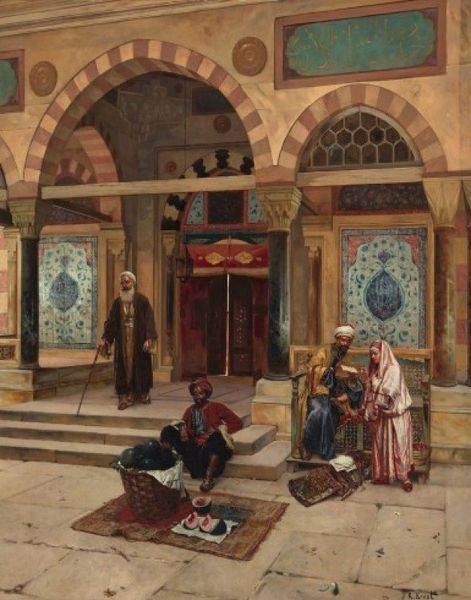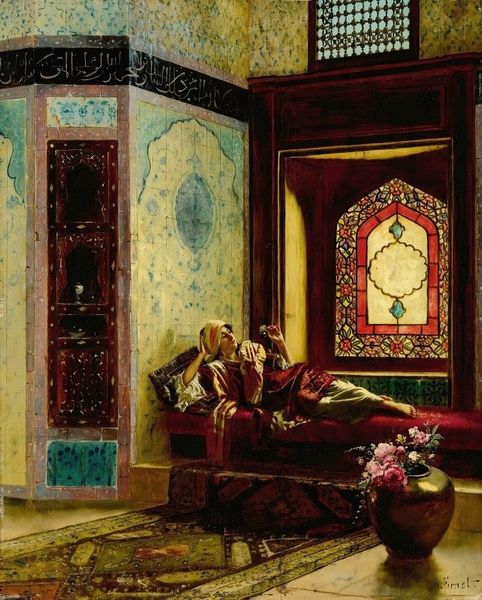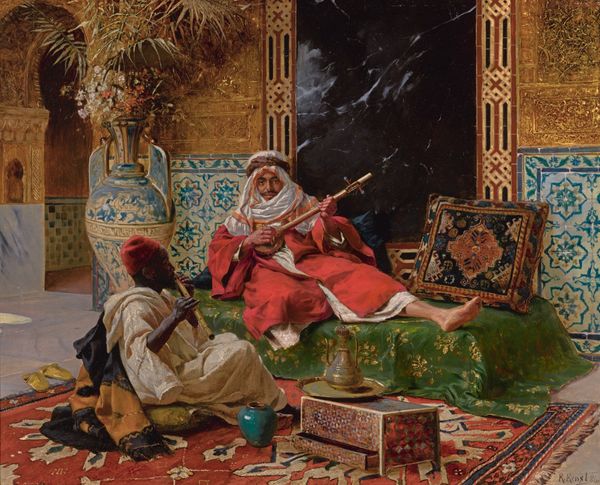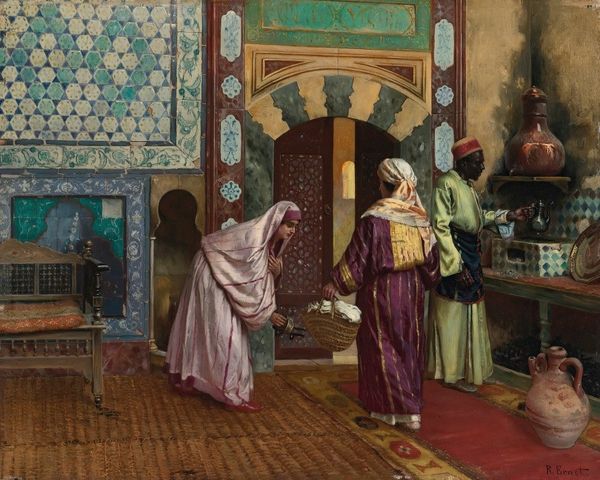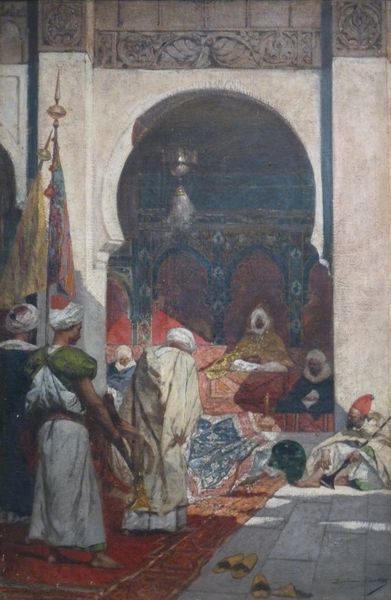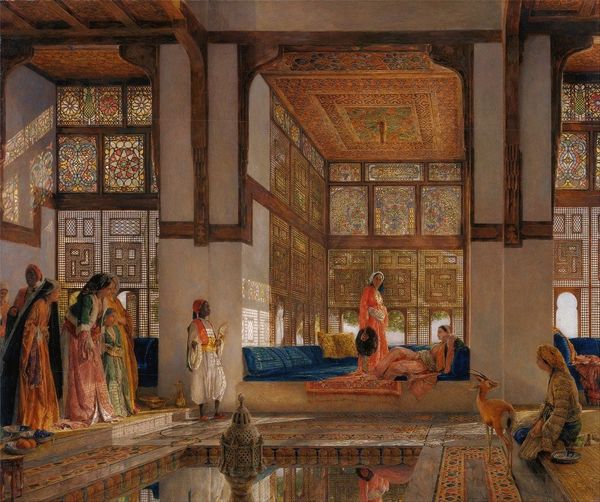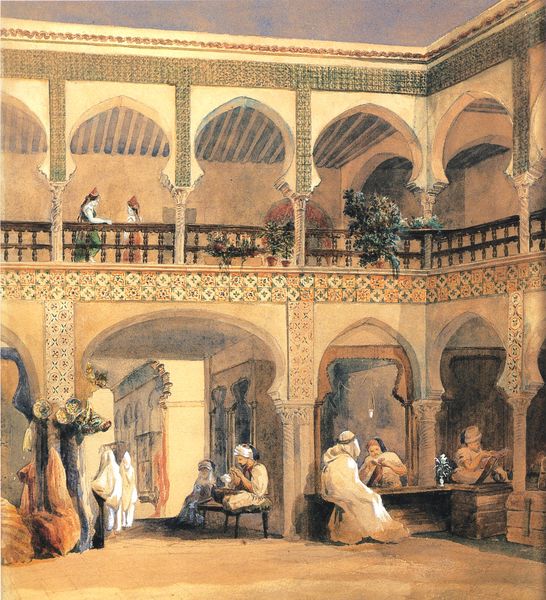
oil-paint
#
oil-paint
#
landscape
#
orientalism
#
islamic-art
#
genre-painting
#
mixed media
Copyright: Public domain
Editor: Rudolf Ernst’s “The Mosque of Rüstem Pasha, Constantinople” presents a snapshot of daily life in a 16th-century Ottoman mosque. There is a very calm mood here. The composition almost feels like a stage set. What can you tell me about the way this painting operates within its historical and social context? Curator: This piece is deeply embedded in Orientalism, a 19th-century Western fascination with the "exotic" Middle East. Ernst, though Austrian, never actually visited the locations he depicted, constructing his scenes from photographs and secondhand accounts. This reveals a colonial gaze at work. Notice how the figures are arranged passively within a carefully ornamented space. What impression does this staged intimacy convey to you? Editor: It feels like a controlled narrative, almost a performance for a Western audience. I suppose this makes the representation less about actual Islamic practice and more about satisfying European desires for an image of the 'Orient'. Curator: Precisely. The painting romanticizes and aestheticizes Islamic culture for European consumption. This brings up critical questions. Who is allowed to represent whom, and what are the ethical implications of such representations? Editor: This reminds us that artworks can be powerful tools in constructing and perpetuating stereotypes and historical misrepresentations. It gives a new perspective about how cultural exchange could easily be misread when power imbalances and socio-political factors come to play. Thanks for helping me look beyond the surface of beauty. Curator: And thank you for engaging with the challenging historical questions this painting poses. Art like this invites us to examine our own biases and assumptions about other cultures and histories.
Comments
No comments
Be the first to comment and join the conversation on the ultimate creative platform.
